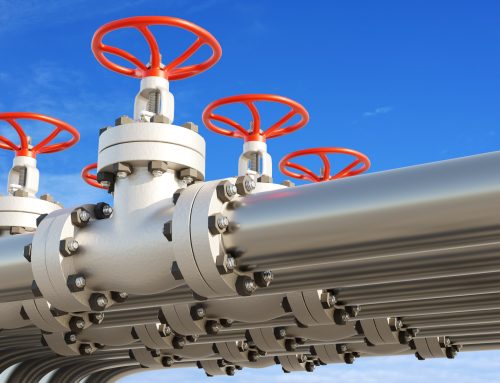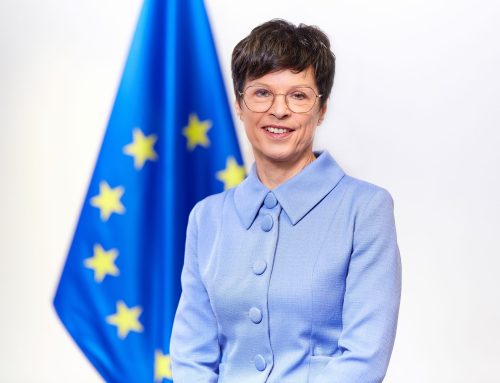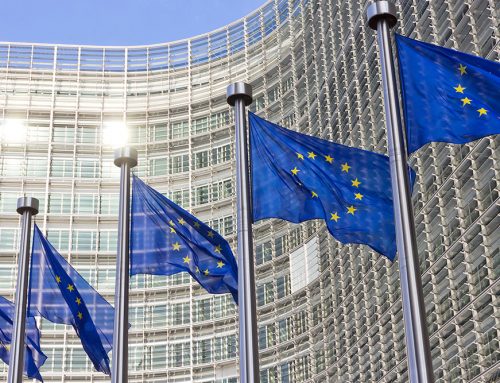A reduction in greenhouse gas (GHG) emissions by 40% below the 1990 level, an EU-wide binding target for renewable energy of at least 27%, renewed ambitions for energy efficiency policies, a new governance system and a set of new indicators to ensure a competitive and secure energy system.
A reduction in greenhouse gas (GHG) emissions by 40% below the 1990 level, an EU-wide binding target for renewable energy of at least 27%, renewed ambitions for energy efficiency policies, a new governance system and a set of new indicators to ensure a competitive and secure energy system. These are the pillars of the new EU framework on climate and energy for 2030 presented today by the European Commission.
Supported by a detailed analysis on energy prices and costs, the 2030 framework will ensure regulatory certainty for investors and a coordinated approach among Member States, leading to the development of new technologies. The framework aims to drive continued progress towards a low-carbon economy and a competitive and secure energy system that ensures affordable energy for all consumers, increases the security of the EU’s energy supplies, reduces our dependence on energy imports and creates new opportunities for growth and jobs, by taking into account potential price impacts on the longer term.
The Communication setting out the 2030 framework will be debated at the highest level, in particular in the European Council and European Parliament. It is accompanied by a legislative proposal for a market stability reserve for the EU emissions trading system (EU ETS) starting in 2021, to improve its robustness. A report on energy prices and costs in Europe, published alongside the Communication, suggests that the rising energy prices can be partly mitigated by ensuring cost effective energy and climate policies, competitive energy markets and improved energy efficiency.
European Commission President José Manuel Barroso said: “Climate action is central for the future of our planet, while a truly European energy policy is key for our competitiveness. Today’s package proves that tackling the two issues simultaneously is not contradictory, but mutually reinforcing. It is in the EU’s interest to build a job-rich economy that is less dependent on imported energy through increased efficiency and greater reliance on domestically produced clean energy. An ambitious 40% greenhouse reduction target for 2030 is the most cost-effective milestone in our path towards a low-carbon economy. And the renewables target of at least 27% is an important signal: to give stability to investors, boost green jobs and support our security of supply”.
Energy Commissioner Günther Oettinger said: “The 2030 framework is the EU’s drive for progress towards a competitive low-carbon economy, investment stability and security of energy supply. My aim is to make sure that energy remains affordable for households and companies. The 2030 framework sets a high level of ambition for action against climate change, but it also recognises that this needs to be achieved at least cost. The internal energy market provides the basis to achieve this goal and I will continue to work on its completion in order to use its full potential. This includes the ‘Europeanisation’ of renewable energy policies”.
Connie Hedegaard, Commissioner for Climate Action, said: “In spite of all those arguing that nothing ambitious would come out of the Commission today, we did it. A 40% emissions reduction is the most cost-effective target for the EU and it takes account of our global responsibility. And of course Europe must continue its strong focus on renewables. That is why it matters that the Commission is proposing today a binding EU-level target. The details of the framework will now have to be agreed, but the direction for Europe has been set. If all other regions were equally ambitious about tackling climate change, the world would be in significantly better shape.”
The key elements of the 2030 policy framework set out by the Commission are as follows:
- A binding greenhouse gas reduction target: A centre piece of the EU’s energy and climate policy for 2030, the target of a 40% emissions reduction below the 1990 level would be met through domestic measures alone. The annual reduction in the ‘cap’ on emissions from EU ETS sectors would be increased from 1.74% now to 2.2% after 2020. Emissions from sectors outside the EU ETS would need to be cut by 30% below the 2005 level, and this effort would be shared equitably between the Member States. The Commission invites the Council and the European Parliament to agree by the end of 2014 that the EU should pledge the 40% reduction in early 2015 as part of theinternational negotiations on a new global climate agreement due to be concluded in Paris at the end of 2015.
- An EU-wide binding renewable energy target: Renewable energy will play a key role in the transition towards a competitive, secure and sustainable energy system. Driven by a more market-oriented approach with enabling conditions for emerging technologies, an EU-wide binding target for renewable energy of at least 27% in 2030 comes with significant benefits in terms of energy trade balances, reliance on indigenous energy sources, jobs and growth. An EU-level target for renewable energy is necessary to drive continued investment in the sector. However, it would not be translated into national targets through EU legislation, thus leaving flexibility for Member States to transform the energy system in a way that is adapted to national preferences and circumstances. Attainment of the EU renewables target would be ensured by the new governance system based on national energy plans (see below).
- Energy efficiency: Improved energy efficiency will contribute to all objectives of EU energy policy and no transition towards a competitive, secure and sustainable energy system is possible without it. The role of energy efficiency in the 2030 framework will be further considered in a review of the Energy Efficiency Directive due to be concluded later this year. The Commission will consider the potential need for amendments to the directive once the review has been completed. Member States’ national energy plans will also have to cover energy efficiency.
- Reform of EU ETS: The Commission proposes to establish a market stability reserve at the beginning of the next ETS trading period in 2021. The reserve would both address the surplus of emission allowances that has built up in recent years andimprove the system’s resilience to major shocks by automatically adjusting the supply of allowances to be auctioned. The creation of such a reserve – in addition to the recently agreed delay in the auctioning of 900 million allowances until 2019-2020 (‘back-loading’) – is supported by a broad spectrum of stakeholders. Under the legislation, proposed today, the reserve would operate entirely according to pre-defined rules which would leave no discretion to the Commission or Member States in its implementation.
- Competitive, affordable and secure energy: The Commission proposes a set of key indicators to assess progress over time and to provide a factual base for potential policy response. These indicators relate to, for example, energy price differentials with major trading partners, supply diversification and reliance on indigenous energy sources, as well as the interconnection capacity between Member States. Through these indicators, policies will ensure a competitive and secure energy system in a 2030 perspective that will continue to build on market integration, supply diversification, enhanced competition, development of indigenous energy sources, as well as support to research, development and innovation.
- New governance system: The 2030 framework proposes a new governance framework based on national plans for competitive, secure and sustainable energy. Based on upcoming guidance by the Commission, these plans will be prepared by the Member States under a common approach, which will ensure stronger investor certainty and greater transparency, and will enhance coherence, EU coordination and surveillance. An iterative process between the Commission and Member States will ensure the plans are sufficiently ambitious, as well as their consistency and compliance over time.
The Communication setting out the 2030 framework is accompanied by a Report on energy prices and costs, which assesses the key drivers and compares EU prices with those of its main trading partners. Energy prices have risen in nearly every Member State since 2008 – mainly because of taxes and levies, but also due to higher network costs. The comparison with international partners highlights rising price differentials, notably with US gas prices – which could undermine Europe’s competitiveness, particularly for energy intensive industries. Nevertheless, rising energy prices can be partly offset by cost effective energy and climate policies, competitive energy markets and improved energy efficiency measures, such as using more energy-efficient products. European industry’s energy efficiency efforts may need to go even further, bearing in mind physical limits, as competitors do the same and European industry decides to invest abroad to be closer to expanding markets. These findings inform the 2030 framework.
Next steps
The European Council is expected to consider the framework at its spring meeting on 20-21 March.
Background
The framework builds on the existing ‘climate and energy package’ of targets for 2020 as well as the Commission’s 2050 roadmaps for energy and for a competitive low-carbon economy. The Communication on the 2030 policy framework follows the Commission’s March 2013 Green Paper, which launched a broad public consultation on the most appropriate range and structure of climate and energy targets for 2030. These documents reflect the EU’s goal of reducing greenhouse gas emissions by 80-95% below 1990 levels by 2050 as part of the effort needed from developed countries.
More information:
On energy aspects of the framework:
http://ec.europa.eu/energy/2030_en.htm
On climate aspects of the framework:
http://ec.europa.eu/clima/policies/2030/index_en.htm
See also:
MEMO/14/39 – Q&A on ETS market stability reserve
MEMO/14/40 – Q&A on the 2030 framework
MEMO/14/38 – Q&A on the energy prices study






